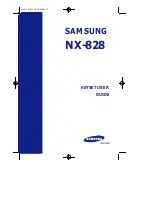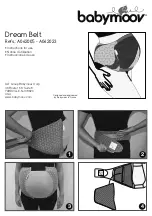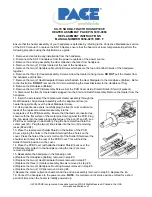
74
Data Files
©
2016-2017 SR Research Ltd.
Some experimentation may be required to select the best parameters. The user
can try different parser settings and perform recordings with full sample data
recorded. The eye-movement data can then be viewed with EyeLink Data Viewer
with saccades and blinks overlaid, to confirm the parsing accuracy. Once
correct parameters are determined, they can be set by the EyeLink commands
over the link as part of the experimental setup, or the EyeLink configuration file
PARSER.INI (REMPARSE.INI for the EyeLink Remote) or FINAL.INI can be edited
to change the default parameters.
4.3.4 Parser Data Type
Three eye-position data types are available from the EyeLink tracker for each
sample: raw eye position, head-referenced angle, and gaze position (see the
section 4.4 “File Data Types” for more information). The parser can use any one
of these for detecting saccades and generating data for events.
The parser data type is set by the EyeLink command “recording_parse_type”. It
can be changed by editing the configuration file DEFAULTS.INI, or by sending a
command over the link. The text of the command is one of:
recording_parse_type = GAZE
recording_parse_type = HREF
4.3.5 Saccadic Thresholds
Three thresholds are used for saccade detection: motion, velocity, and
acceleration. The values of these are in degrees, degrees/sec, and degrees/sec
²
respectively.
The velocity threshold is the eye-movement velocity that must be exceeded for a
saccade to be detected. A velocity threshold of 22 degrees per second allows
detection of saccades as small as 0.3
°
, ideal for smooth pursuit and
psychophysical research. A conservative threshold of 30
°
/sec is better for
reading and cognitive research, shortening saccades and lengthening fixation
durations. The larger threshold also reduces the number of microsaccades
detected, decreasing the number of short fixations (less than 100 ms in
duration) in the data. Some short fixations (2% to 3% of total fixations) can be
expected, and many researchers simply discard these.
Use of eye-movement acceleration is important for detection of small saccades,
especially in smooth pursuit. Acceleration data has much more noise than
velocity data, and thresholds of 3800
°
/sec
2
for small saccade detection and
8000
°
/sec
2
for reading and cognitive research are recommended. Lower
acceleration thresholds will produce false saccade reports. Acceleration data
and thresholds for the EyeLink eye tracker system may be larger than those
reported for analog eye trackers. These systems use multi-pole filters for noise
reduction that add delay and smooth the data, significantly reducing the
measured acceleration.
















































